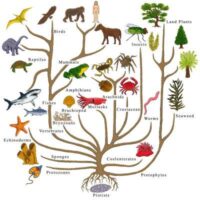Introduction
Evolution is the most popular natural explanation for the origin of Earth’s biosphere. Charles Darwin, author of The Origin of Species, is still the most widely recognized authority on evolution.
Observing varying Galapagos finch beaks and developing resistance to antimicrobial agents support Darwin’s hypothesis – both then and now.
Darwin applied the term natural selection as the explanation accounting for a natural origin of Earth’s biosphere developing over long periods of time. The five principles of natural selection are variation, inheritance, selection, time, and adaptation. Natural selection is understood to be nature’s speciation process.
However, while speciation may be a logical extension of adaptative processes, speciation events have never been observed scientifically. Adaptation and speciation are two different processes. Darwin titled his book –
“On the Origin of Species by Means of Natural Selection or the Preservation of Favoured Races in the Struggle for Life.”
“Origin of Species” infers a speciation process, and the “Preservation of Favoured Races” infers an adaptive process. Therefore, Darwin envisioned natural selection performing two distinctly different methods.
Our journey to understand evolution begins with the history of evolution concepts, events, and the people seeking a natural explanation. Importantly, we will examine whether Darwin’s study approach followed the principles of logic or science.
Natural Selection
 Natural selection, a cornerstone concept in modern biology, plays a pivotal role in the origin and shaping of Earth’s vast biosphere. In the wake of more than a century of research, scientists increasingly recognize Darwin’s concept of natural selection as two distinct processes: microevolution and macroevolution.
Natural selection, a cornerstone concept in modern biology, plays a pivotal role in the origin and shaping of Earth’s vast biosphere. In the wake of more than a century of research, scientists increasingly recognize Darwin’s concept of natural selection as two distinct processes: microevolution and macroevolution.
Microevolution is an adaptive process within a species, while macroevolution is a speciation process with natural selection driving both processes. While scientific evidence has validated microevolution (adaptation), macroevolution exists only as a philosophical concept.
The approach to studying nature may be studied philosophically or scientifically, a seemingly subtle distinction. However, the history of science demonstrates a vast difference between these two approaches to understanding how nature works.
Philosophical Approach
While a philosophical approach allows flexibility without strict principles, scientific approaches are principled and use systematic and structured methods. Understanding the distinction, Darwin claimed to have used the scientific approach. In his Autobiography, Darwin recorded beginning with “True Baconian principles and without any theory collected facts” in 1837.
Bacon’s systematic method of studying nature launched the Scientific Revolution – principles of science are still essential in the twenty-first century. Perhaps, to disguise his approach, Darwin quoted from Francis Bacon in the opening pages of The Origin of Species – in all six editions.
“… let no man out of a weak conceit… think or maintain, that a man can search too far or be too well studied in the book of God’s word…”
Even though inferring adherence to Baconian principles and “God’s word” – Darwin didn’t. When questioned by Cambridge alumni Henry Fawcett in 1861 following “The Great Debate,” Darwin recommended abandoning the principles of science –
“How odd it is that everyone should not see that all observation must be for or against some view if it is to be of any service.”
After 1837, philosophy incrementally replaced Baconian principles. Philosophical approaches continue to be widely practiced in the twenty-first century. Without any supportive evidence, Astrobiologists at NASA extended Darwin’s hypothesis to define what life is –
“Life is a self-sustaining chemical system capable of Darwinian evolution.”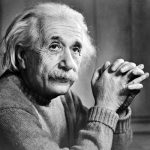
The concept of macroevolution and NASA’s definition of life may be logical deductions. However, without empirical support and testing, neither idea is scientifically valid.
Scientific Approaches
Science is a systematic process of understanding the natural world using empirical evidence, observation, experimentation, testing, and inductive analysis. With a scientific approach, the causes and effects in nature can be validated or falsified; philosophical approaches can’t. Darwin’s power of natural selection argument illustrates the problem using an intellectual approach –
“I can see no limit to this power [natural selection] in slowly and beautifully adapting each form to the most complex relations of life.”
However, Darwin’s analysis lacked empirical evidence. Therefore, his approach was philosophical, not scientific – a ubiquitous approach applied throughout The Origin of Species. Modern scientists now understand through testing the limitations of natural selection to only what already exists.
A scientific approach is the only proven method to unlock nature’s mysteries; however, scientifically validating a theory is challenging. And, as essential as a scientific approach is, only repetitive testing can maintain its validation. In the words of Albert Einstein (pictured right) –
“No amount of experimentation can ever prove me right; a single experiment can prove me wrong.”
Nevertheless, under the guise of science, Darwin generated one of the most contentious theories in the history of science. Since then, “The Great Debate” over the validity of evolution continues into its second century.
“The Great Debate”
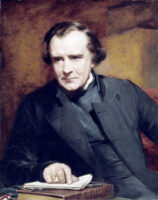 Inspired by Darwin, “The Great Debate” continues into the twenty-first century. Samuel Wilberforce (pictured left) and Thomas Huxley (pictured right) launched the debate in 1860 following the publication of the Origin of Species in 1859.
Inspired by Darwin, “The Great Debate” continues into the twenty-first century. Samuel Wilberforce (pictured left) and Thomas Huxley (pictured right) launched the debate in 1860 following the publication of the Origin of Species in 1859.
Huxley held a gold medal award in biology from the University of London but did not qualify for a university degree. Samuel Wilberforce graduated with a “first-class degree” in mathematics and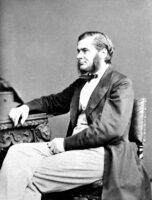 classics from the University of Oxford and was appointed head Dean at Westminster Abbey.
classics from the University of Oxford and was appointed head Dean at Westminster Abbey.
As the son of William Wilberforce, the leader of Britain’s abolitionist movement, Wilberforce’s debating roots ran deep. Huxley, known as Darwin’s Bulldog, confronted Wilberforce, a critic of Darwin’s hypothesis – with each side declaring victory. By twenty-first-century standards, philosophy on both sides drove the debate, not science.
The outcome illustrates how different approaches, even by the highly educated, may logically view nature differently – using the same evidence. The philosophical approach searches for the meaning and purpose of the biosphere. By contrast, the scientific approach searches for the natural laws governing the biosphere.
By Investigation Evolution, “The Great Debate” continues, loaded with evidence from fields of science inconceivable in the nineteenth century.
Tools of Science
Science is a systematic and principled study method for unlocking nature’s hidden mysteries. Its approach includes objective observation, quantitative and qualitative assessments, and testing. Analyzing empirically obtained observations using inductive reasoning is crucial to the scientific method.
Science and philosophy differ vastly in their goals and methods. While science aims to understand nature’s laws, philosophy seeks to understand knowledge, reality, and existence.
Science is constrained to analyze empirical evidence inductively. By contrast, philosophy is free of constraints to explore abstract concepts using logic and reason. As a result, a philosophical approach can be influenced by investigator bias – as Darwin practiced.
The tools to scientifically validate a law of nature, like natural selection, are not in philosophy’s chest of tools.
Testing in Moths
 In the mid-twentieth century, the first scientific test of natural selection was in moths. British geneticist Bernard Kettlewell (pictured left) tested the role of natural selection by observing the effect of industrial pollution on the coloring of peppered moths (pictured right). In observing how the dark moth populations gradually surpassed the light-colored moths, Kettlewell concluded that industrial pollution induced adaptive darkening through natural selection.
In the mid-twentieth century, the first scientific test of natural selection was in moths. British geneticist Bernard Kettlewell (pictured left) tested the role of natural selection by observing the effect of industrial pollution on the coloring of peppered moths (pictured right). In observing how the dark moth populations gradually surpassed the light-colored moths, Kettlewell concluded that industrial pollution induced adaptive darkening through natural selection.
 In 1959, Kettlewell published the results of his study entitled “Darwin’s Missing Evidence” in Scientific American. British geneticist Philip. M. Sheppard called the phenomenon –
In 1959, Kettlewell published the results of his study entitled “Darwin’s Missing Evidence” in Scientific American. British geneticist Philip. M. Sheppard called the phenomenon –
“… the most spectacular evolutionary change ever witnessed and recorded by man.”
Kettlewell’s study validated the adaptive role of natural selection. As industrial pollution decreased, the dark and light moth populations gradually returned to their pre-industrial levels. Therefore, Kettlewell’s peppered moth studies demonstrated how adaptations within a species can align with environmental changes.
Testing in Bacteria
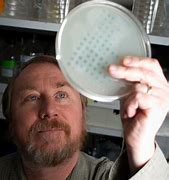 Richard Lenski (pictured left), a professor at Michigan State University, explored the role of natural selection further in microbes. In the longest evolution laboratory experiment in the history of biology, Lenski tested the transition into a speciation process – macroevolution. Can adaptive changes transition into a speciation process? In 1988, Lenski launched the test.
Richard Lenski (pictured left), a professor at Michigan State University, explored the role of natural selection further in microbes. In the longest evolution laboratory experiment in the history of biology, Lenski tested the transition into a speciation process – macroevolution. Can adaptive changes transition into a speciation process? In 1988, Lenski launched the test.
Although adaptive changes developed in Escherichia coli following exposure to varying environments (pictured right), no evidence of macroevolution developed. In 2017, writing for Science Alert, Fiona MacDonald placed the comparison between bacteria and human evolution into context –
“Scientists have spent the past 30 years carefully tracking evolution across more than 68,000 generations of E. coli bacteria – the equivalent of more than 1 million years of human evolution.”
Like Kettlewell, Lenski began and ended with the same species—Escherichia coli. Macroevolution never happened. Lenski transferred the study to Jeffrey E. Barrick at the University of Texas in 2022. Since then, the testing has continued. However, Barrick has not published evidence supporting Darwin’s “origin of species” concept.
The empirical observations in moths and experimental testing in bacteria scientifically support the concept of microevolution. However, the concept of macroevolution has yet to be scientifically validated. Science is a finely tuned process to separate facts from fiction.
A Prussian Renaissance mathematician and astronomer, Nicholas Copernicus, was among the first to use a scientific approach to separate the solar system’s facts from fiction, breaking the domination of philosophy.
Science Testing Methods
 Introducing scientific principles unleashed the Scientific Revolution, overturning ancient Greek philosophies. In the sixteenth century, Nicholas Copernicus (1473-1543) (pictured left) flipped Aristotle’s geocentric view of the universe. Using objective observations and repetitive empirical observations, Copernicus inductively concluded that the Sun, not Earth, was the center of our solar system, a heliocentric theory.
Introducing scientific principles unleashed the Scientific Revolution, overturning ancient Greek philosophies. In the sixteenth century, Nicholas Copernicus (1473-1543) (pictured left) flipped Aristotle’s geocentric view of the universe. Using objective observations and repetitive empirical observations, Copernicus inductively concluded that the Sun, not Earth, was the center of our solar system, a heliocentric theory.
This new approach ignited a cultural and Scientific Revolution in studying nature. Francis Bacon (1561-1626) later further formalized Copernicus’s approach. The systematic principles of Bacon’s approach, known as the scientific method, establish clear boundaries between science and non-science. The scientific method is an empirical method for acquiring knowledge about nature.
The critical components of science include formulating hypotheses via induction based on objective observations and testing the hypotheses.
Scientific Method
 Francis Bacon (pictured right), co-founder of the Royal Society, formalized and systemized Copernicus’ approach. However, Darwin modified Bacon’s principles, switching subjective for objective observations and deductive for inductive reasoning. Notably, Darwin never performed any testing. According to Darwin, objective observations are counter-productive –
Francis Bacon (pictured right), co-founder of the Royal Society, formalized and systemized Copernicus’ approach. However, Darwin modified Bacon’s principles, switching subjective for objective observations and deductive for inductive reasoning. Notably, Darwin never performed any testing. According to Darwin, objective observations are counter-productive –
“How odd it is that anyone should not see that all observation must be for or against some view if it is to be of any service.”
When questioned by American naturalist Asa Gray about his study approach, Darwin candidly replied in 1859 –
“What you hint at generally is very, very true: that my work is grievously hypothetical, and large parts are by no means worthy of being called induction, my commonest error being probably induction from too few facts.”
 Bacon’s scientific principles using objective observations, inductive logic, and experimental testing still are modern science’s premier investigative standard. Applying Bacon’s approach can validate the laws of cause and effect in nature, like Isaac Newton’s (pictured left) laws of gravity and motion. Lenski’s ongoing study on E. coli evolution is an example of applying the scientific method in biology.
Bacon’s scientific principles using objective observations, inductive logic, and experimental testing still are modern science’s premier investigative standard. Applying Bacon’s approach can validate the laws of cause and effect in nature, like Isaac Newton’s (pictured left) laws of gravity and motion. Lenski’s ongoing study on E. coli evolution is an example of applying the scientific method in biology.
However, experimental testing is not always feasible. Naturalists use an observational or historical science approach when experimental manipulations are not feasible.
Observational Science
 The observation science approach uses the scientific method but replaces manipulative experimental testing with non-manipulative testing. This testing validity approach is the primary study method in scientific fields, including physics, chemistry, geology, astronomy, and health and population sciences.
The observation science approach uses the scientific method but replaces manipulative experimental testing with non-manipulative testing. This testing validity approach is the primary study method in scientific fields, including physics, chemistry, geology, astronomy, and health and population sciences.
Rather than identifying cause-and-effect relationships using experimental testing, observation science aims to identify associations between variables. As Kettlewell’s moth study is a classic example, sequencing genomes (pictured right) is a modern example of observational science.
Observation science cannot validate a theory with absolute certainty; it only validates its probability.
Historical Science
 The study of ancient biology, known as paleontology, began with ancient Greek philosophers. As ancient Earth’s only direct evidence, paleontology is an essential field of study for scientifically validating the hypothesis of evolution. Studying ancient artifacts is known as historical science, which applies observation science principles to the phenomena of past events.
The study of ancient biology, known as paleontology, began with ancient Greek philosophers. As ancient Earth’s only direct evidence, paleontology is an essential field of study for scientifically validating the hypothesis of evolution. Studying ancient artifacts is known as historical science, which applies observation science principles to the phenomena of past events.
The emergence of advanced biotechnologies beginning in the late twentieth century extended the reach of modern paleontology. Scientists can now extract and analyze the genetic material in fossils.
As the only discipline to directly study early life, historical science is crucial in testing evolution’s validity.
Degrees of Testing Validity
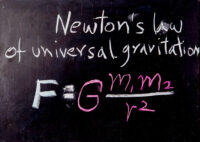 These different scientific approaches have different degrees of testing validity. The word “valid” originates from the Latin word validus, meaning strong. Experimental testing differentiates the scientific method from other scientific approaches by manipulating testing variables. Hence, the scientific method is science’s most rigorous method of testing.
These different scientific approaches have different degrees of testing validity. The word “valid” originates from the Latin word validus, meaning strong. Experimental testing differentiates the scientific method from other scientific approaches by manipulating testing variables. Hence, the scientific method is science’s most rigorous method of testing.
The scientific method can validate cause-and-effect laws of nature. For example, Newton manipulated weights and distances to validate the law of gravity (pictured right). However, Lenski never validated natural selection’s role in speciation, i.e., “the origin of species.”
By comparison, observation science and historical science study approaches calculate probabilities when variable manipulation is not feasible for testing. Unlike the scientific method, neither observation nor historical science can definitively prove or disprove a theory – only probabilities.
Darwin’s Approaches
Popularized by Aristotle in Western academia, Darwin’s approach to natural selection originated in Greek philosophy. While Darwin highly regarded Bacon’s scientific method, Darwin simultaneously marginalized the importance of the principles of science. In the words of evolutionary biologist Francisco Ayala –
“There is a contradiction between Darwin’s methodology and how he described it for public consumption.”
Although portrayed as a scientist, Darwin’s approach was inconsistent with the principles of science. The influence of Darwin’s practice of blending philosophy with science continues as a ubiquitous practice within Western academia.
NASA’s definition of “life” exemplifies the popular acceptance of Darwin’s blending approach of philosophy and science. A “self-sustaining chemical system” has yet to be observed and tested.
Charles Darwin

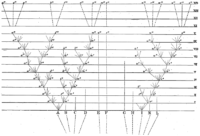 Darwin’s Red Note Book (1837), “I Think” Tree of Life (pictured left), illustrated his approach. “I think” had replaced his “I Observed” approach just months after returning to England on the HMS Beagle. The letters A, B, C, and D, representing different “species,” were speculations but never observed in nature.
Darwin’s Red Note Book (1837), “I Think” Tree of Life (pictured left), illustrated his approach. “I think” had replaced his “I Observed” approach just months after returning to England on the HMS Beagle. The letters A, B, C, and D, representing different “species,” were speculations but never observed in nature.
After more than two decades, in The Origin of Species (1859), Darwin replaced his “I Think” drawing with a diagram (pictured right) in which different “species” were speculations depicted as letters and numbered letters – also never observed in nature. Darwin argued –
“The affinities of all the beings of the same class have sometimes been represented by a great tree. I believe this simile largely speaks the truth.”
However, unlike Newton, Darwin never defined the meaning of his letters. Precise definitions lay the foundation for scientific progress, enabling effective communication and collaboration. The influence of family history and contemporary philosophical currents formulated the framework of Darwin’s hypothesis of natural selection – replacing objective observations.
Erasmus Darwin
Charles Darwin aligned with the ideological perspectives of his grandfather, Erasmus Darwin (pictured right). As a highly educated Freemason, he was a sought-after physician, even by King George III. At the time, the increasing popularity of the Age of Enlightenment endeavored to blur the distinction between science and philosophy.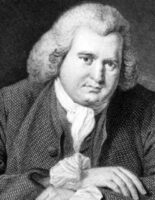
In his two-volume Zoonomia, the Laws of Organic Life (1794-96), Erasmus encouraged readers to use their imaginations, arguing –
“Would it be too bold to imagine that all warm-blooded animals have arisen from one living filament, which the great First Cause endued with animality… possessing the faculty of continuing to improve by its own inherent activity, and of delivering down these improvements by generation to its posterity, world without end?”
Philosophy Driven
In the last chapter of The Origin of Species, Darwin acknowledged his philosophical approach using logical arguments, writing –
“As this whole volume is one long argument… “
While enjoying international popularity, popularity with his colleagues at The Royal Society differed.
Royal Society Colleagues
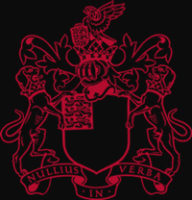 The Royal Society, co-founded by Francis Bacon in 1660, remains the first and longest-running scientific organization in Western Civilization. As the organization to differentiate science from the influences of philosophy, the Society emerged as a cornerstone institution guiding the Scientific Revolution. The Society sets standards and recognizes and awards scientific advancements.
The Royal Society, co-founded by Francis Bacon in 1660, remains the first and longest-running scientific organization in Western Civilization. As the organization to differentiate science from the influences of philosophy, the Society emerged as a cornerstone institution guiding the Scientific Revolution. The Society sets standards and recognizes and awards scientific advancements.
Principally, the Society upheld the inductive principles of science, rejecting philosophical and logical deductive arguments. To reflect its mission, the Society adopted the moto – Nullius in Verba – meaning “take nobody’s word for it.”
Understanding Evolution is a site Cornerstone.
More
Studying Evolution and What Is Science? are subcategories of Understanding Evolution.
Darwin Then and Now is an educational resource on the intersection of evolution and science, highlighting the ongoing challenges to the theory of evolution.
Move On
Explore how to understand twenty-first-century concepts of evolution further using the following links –
-
- The Understanding Evolution (current page) category showcases how different investigative approaches can lead to diverse conclusions. Subcategories include –
- Studying Evolution explains how key evolution terms have changed since The Origin of Species was published in 1859.
- What is Science explains Charles Darwin’s approach to science and how modern science approaches are used for different investigative purposes.
- Evolution and Science feature study articles on how the scientific evidence influences the current understanding of evolution.
- Theory and Consensus feature articles on the historical timelines of the theory and Natural Selection.
- The Biography of Charles Darwin category showcases relevant aspects of his life.
- The Glossary defines terms used in studying the theory of biological evolution.
- The Understanding Evolution (current page) category showcases how different investigative approaches can lead to diverse conclusions. Subcategories include –

